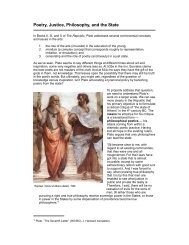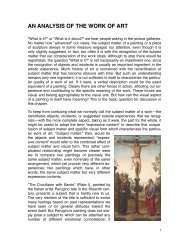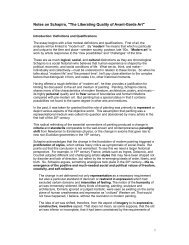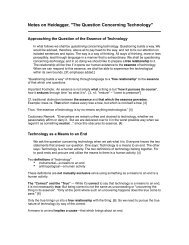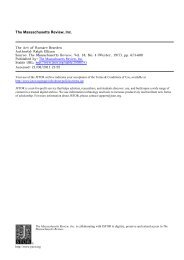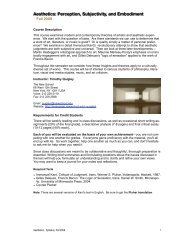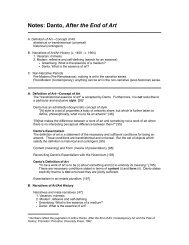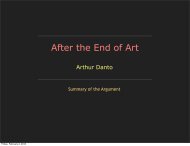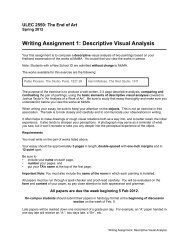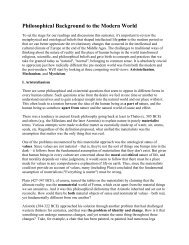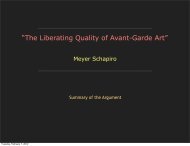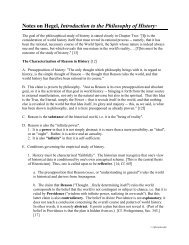You also want an ePaper? Increase the reach of your titles
YUMPU automatically turns print PDFs into web optimized ePapers that Google loves.
art, just as the universal language would free us of all the confused relationships that lurk inexistent languages?23. Dioptrique, Discours IV. [Note 20 above.]24. Discours V of the Dioptrique, especially Descartes's diagrams, helps considerably to clarity thiscompressed passage.—Trans.25. That is, the painting.—Trans.26. E. Panofsky, Die Perspektive als symbolische Form, in Vorträge der Bibliotek Warburg, vol. 4(1924-25).27. Ibid. [The Stilmoment, or moment of an instituted style, does not dispense with theWermoment, or moment of the individual perception.—Trans.]28. Descartes, Discours IV, Adam et Tannery, 135. [Bridoux, 220; Smith, 154.] Here is N. KempSmith's translation of the passage under discussion: "Our knowledge of it (the situation of anobject) does not depend on any image or action which comes to us from the object, but solely onthe situation of the small parts of the brain whence the nerves take their origin. For this situation—asituation which changes with every change however small in the points at which these nerve-fibersare located—is instituted by nature in order to secure, not only that the mind be aware of thelocation of each part of the body which it animates, relatively to all the others, but also that it beable to transfer its attention to all the positions contained in the straight line that can be imaged asdrawn from the extremity of each of these parts, <strong>and</strong> as prolonged to infinity."]29. Ibid., Adam et Tannery, 137. [Bridoux, 222; Smith, 155. N. Kemp Smith's translation is givenhere.]30. No doubt Merleau-Ponty is speaking of Princess Elizabeth, Descartes's correspondent. Cf.Phénoménologie de la perception, 230-32 (C. Smith translation, 198-99), <strong>and</strong> Descartes's letter toElizabeth of 28 June 1643 (Bridoux, 1157-61).—Trans.31. That is, the obscurity of the "existential" order is just as necessary, just as grounded in God, asis the clarity of true thoughts ("nos lumières").Trans.32. Cf. note 18, above.—Trans.33. B. Dorival, Paul Cézanne (Paris, 1948), 103ff. [H. H. A. Thackthwaite's translation (London,1948), 101-3.]34. Charbonnier, Le monologue, 176.35. Delaunay, Du cubisme, 109.36. F. Novotny, Cézanne und das Ende der wissenschaftlichen Perspective (Vienna, 1938).37. W. Grohmann, Paul Klee (Paris, 1954), 141. [New York, 1956.]38. Delaunay, Du cubisme, 118.39. Klee, Journal. French trans. P. Klossowski (Paris, 1959).40. George Schmidt, Les aquarelles de Cézanne, 21. [The Watercolors of Cézanne (New York,1953).]41. Klee, Journal.42. "The spectacle is first of all a spectacle of itself before it is a spectacle of something outside ofit." — Translator's note from Merleau-Ponty's 1961 lectures.43. C. P. Bru, Esthétique de l'abstraction (Paris, 1959),99,86.44. Henri Michaux, Aventures de lignes.20



